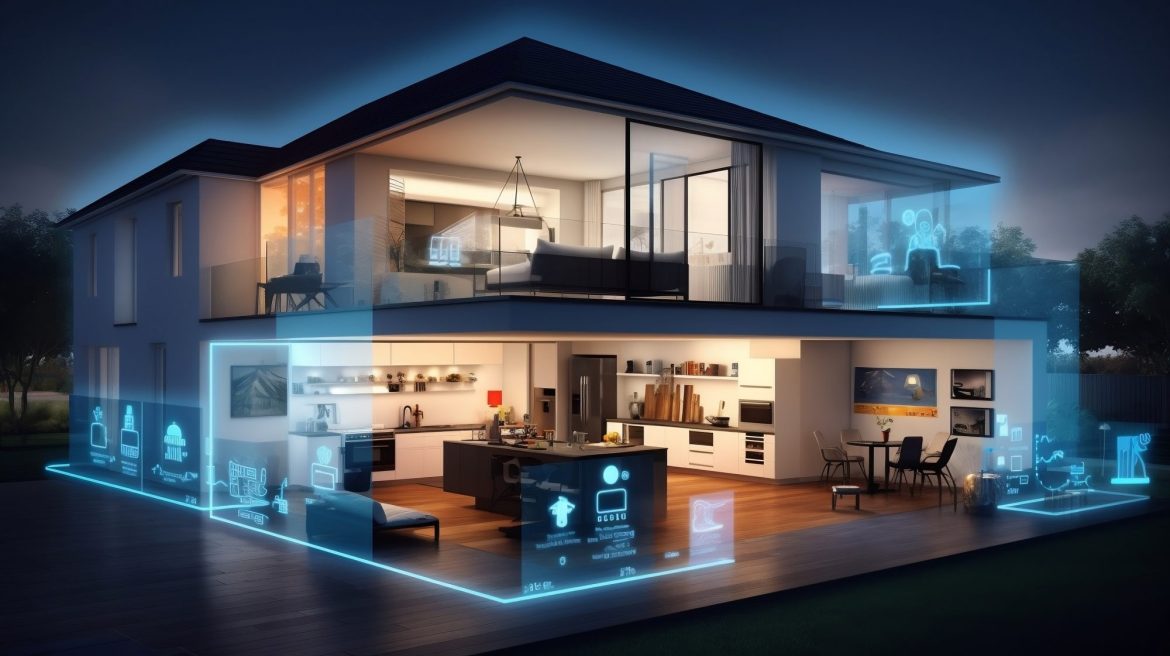In recent years, the concept of a “smart home” has evolved from a futuristic idea to a mainstream reality. Smart home automation, which involves the integration of technology and devices to enhance the functionality and efficiency of a household, has become increasingly popular among homeowners. This article explores the growing trend of smart home automation, its benefits, and the technologies driving this transformation.
The Evolution of Home Automation
From Simple Remote Controls to Intelligent Systems
Home automation has come a long way from simple remote controls for TVs and stereos. Today’s smart homes are equipped with intelligent systems that can control lighting, heating, cooling, security, and entertainment devices. These systems are designed to make life more convenient, energy-efficient, and secure.
Integration of IoT (Internet of Things)
A key driver of the smart home trend is the integration of IoT devices. These devices, such as smart thermostats, locks, cameras, and voice-controlled assistants like Amazon Alexa and Google Assistant, can communicate with each other through a central hub or smartphone app. This interconnected ecosystem allows homeowners to monitor and control various aspects of their homes remotely.
Benefits of Smart Home Automation
Convenience and Comfort
One of the primary benefits of smart home automation is the convenience it offers. Homeowners can control devices and systems with a simple voice command or a tap on their smartphone. For example, they can adjust the thermostat, turn off lights, or lock doors from anywhere, making daily routines more comfortable and efficient.
Energy Efficiency
Smart home technologies contribute to energy conservation. Smart thermostats can learn household patterns and adjust heating and cooling accordingly, reducing energy consumption. Automated lighting systems can turn off lights when rooms are unoccupied, further reducing electricity usage.
Enhanced Security
Home security has been greatly enhanced with smart automation. Surveillance cameras can provide real-time monitoring, and smart locks offer secure access control. In case of unusual activity, homeowners receive instant alerts on their smartphones, allowing for quick responses to potential threats.
Cost Savings
While initial investments in smart home devices and systems can be significant, they often result in long-term cost savings. Reduced energy bills, lower insurance premiums due to enhanced security, and increased property value are some of the ways homeowners can recoup their investment.
Key Technologies Powering Smart Homes
Voice Control
Voice-activated assistants like Amazon Alexa and Google Assistant have revolutionized the way homeowners interact with their smart devices. Users can control lights, music, and even kitchen appliances using voice commands.
Smart Sensors
Smart sensors play a crucial role in home automation. Motion sensors, door/window sensors, and environmental sensors help automate various functions and trigger actions based on specific conditions, such as turning on lights when motion is detected.
Wireless Connectivity
Wireless technologies like Wi-Fi, Bluetooth, and Zigbee enable seamless communication between devices. This wireless connectivity ensures that all components of a smart home ecosystem can work together efficiently.
Artificial Intelligence (AI)
AI-driven algorithms are used to analyze data from various sensors and devices. This allows for predictive maintenance, energy optimization, and adaptive behavior in response to user preferences.
Challenges and Considerations
While smart home automation offers numerous benefits, there are also challenges and considerations to keep in mind:
Privacy and Security
The interconnected nature of smart homes raises concerns about data privacy and security. Protecting personal information and ensuring secure access to devices are ongoing challenges.
Compatibility
Ensuring that all smart devices are compatible with each other and can be easily integrated into a cohesive system can be complex. Homeowners may need to invest in a central hub to manage multiple devices from different manufacturers.
Initial Costs
The upfront costs of smart home automation can be a barrier for some homeowners. However, prices are gradually decreasing as technology becomes more accessible.
The Future of Smart Home Automation
The trend of smart home automation is expected to continue growing as technology advances. Future developments may include more advanced AI-driven systems, increased energy efficiency, and enhanced customization options for homeowners.
In conclusion, smart home automation is rapidly transforming the way we live, offering convenience, energy efficiency, and security. As technology continues to evolve, the smart home trend is likely to become an integral part of modern living, enhancing the quality of life for homeowners and setting new standards for home functionality and efficiency.

